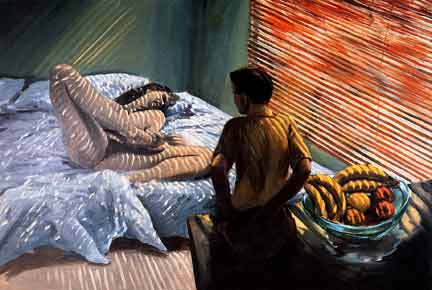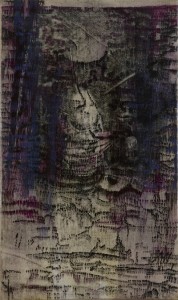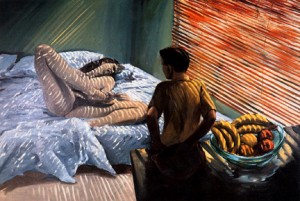Art Movements: New European Painting

New European Painting
emerged in the 1980s and has clearly reached a critical point of major distinction and influence in the 1990s with painters like Gerhard Richter andBracha Ettinger whose paintings have established and continue to create a new dialogue between the historical archive, American Abstraction and figurality, followed by painters like Luc Tuymans, Marlene Dumas and others. A third wave came with artists like Neo Rauch, Michaël Borremans and Chris Ofili.

Bracha Ettinger, Painting: Matrix – Family Album series n.3, 2001.
Neo-expressionism and other related movements in painting have emerged in the final two decades of the 20th century in Europe and in the United States, but this New Painting is not expressionist. Rather it is a renovative kind of abstraction and figuration that relates to the parallel practice of a turning into art of personal and historical photographic archives. The New European Painting relates to the post traumatic traces of war and it involves working oil painting and drawings with new media like photography, xerox and digital media to create and develop a postmodern archive “fever”. This painting relates through this aspect to the post WW2 “archive” art with artists like Christian Boltanski and Jochen Gerz, and it is often a part of this tendency. Yet, though this painting has a clear figurative stroke it is strongly connected to Lyrical Abstraction and to contemporary reconsiderations of theSublime in art.
Source: en.wikipedia.org.com



This Post Has 0 Comments